Nickname(s) "The March King" Name John Sousa | Role Composer Movies Stars and Stripes Forever | |
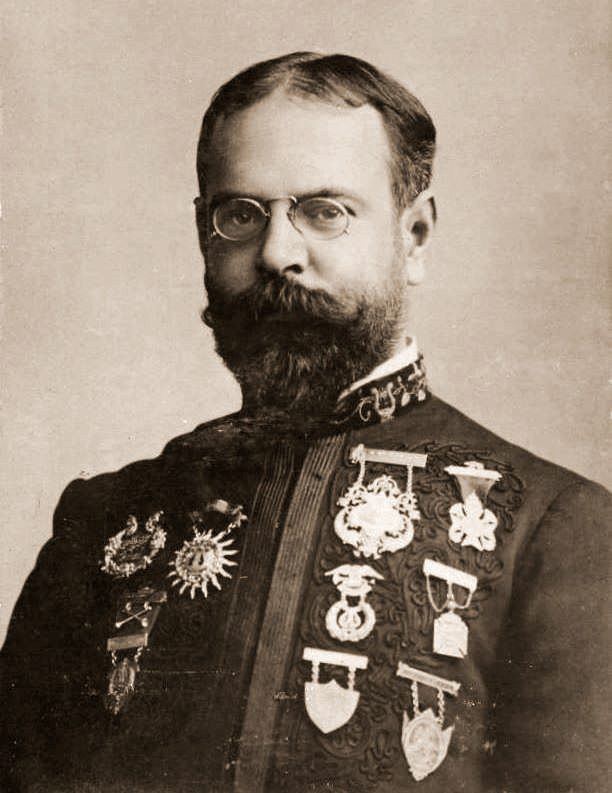 | ||
Born November 6, 1854Washington, D.C., U.S. ( 1854-11-06 ) Buried at Congressional CemeteryWashington, D.C., U.S. Allegiance United States of America Years of service 1868–1875, 1880–1892 (USMC)1917–1918 (USN) Albums Sousa Marches (Boston Pops Orchestra) Books The Fifth String, Pipetown Sandy, The Transit of Venus, Our Flirtations: Score an, The Stars and Stripes Forever! Similar People Keith Brion, Frederick Fennell, Stephen Foster, Morton Gould, Leonard Bernstein | ||
The story of john philip sousa
John Philip Sousa (;; November 6, 1854 – March 6, 1932) was an American composer and conductor of the late Romantic era, known primarily for American military and patriotic marches. Because of his mastery of march composition, he is known as "The March King", or the "American March King" due to his British counterpart Kenneth J. Alford also being known by the former nickname. Among his best-known marches are "The Stars and Stripes Forever" (National March of the United States of America), "Semper Fidelis" (Official March of the United States Marine Corps), "The Liberty Bell" (used as the theme for Monty Python's Flying Circus), "The Thunderer" and "The Washington Post".
Contents
- The story of john philip sousa
- John philip sousa movie wmv
- Early life and education
- Career
- Personal life
- Military service
- Honors
- Music
- Marches
- Operettas
- Writings views and interests
- Trapshooting
- Writing
- Hostility to recording
- Other interests
- John Philip Sousa Award
- References

Sousa began his career playing violin and studying music theory and composition under John Esputa and George Felix Benkert. His father enlisted him in the United States Marine Band as an apprentice in 1868. After departing the band in 1875, Sousa learned to conduct. From 1880 until his death, he focused exclusively on conducting and the writing of music. He eventually rejoined the Marine Band and served there for 12 years as director. On leaving the Marine Band, Sousa organized his own band. Sousa aided in the development of the sousaphone, a large brass instrument similar to the helicon and tuba. At the outbreak of World War I, Sousa was commissioned as a lieutenant commander and led the Naval Reserve Band in Illinois. Following his tenure, he returned to conduct the Sousa Band until his death in 1932. In the 1920s he was promoted to lieutenant commander in the naval reserve, but never saw active service again.
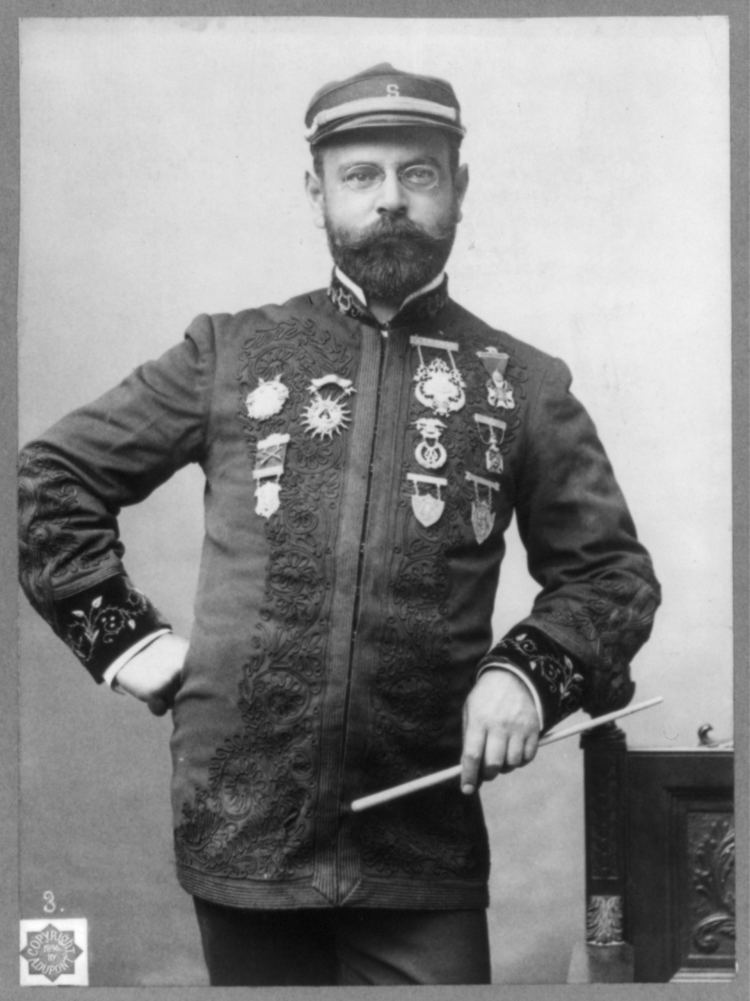
John philip sousa movie wmv
Early life and education
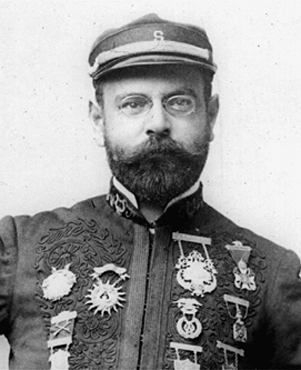
John Philip Sousa was born in Washington, D.C., the third of ten children of João António de Sousa (John Anthony Sousa) (Seville, 22 September 1824 - 27 April 1892), who was of Portuguese and Spanish ancestry (son of João António de Sousa and wife Josefina Blanco, from Seville), and his wife Maria Elisabeth Trinkhaus (Darmstadt, 20 May 1826 - 25 August 1908), who was of Hessian ancestry (daughter of Peter Trinkhaus and wife Catherine Schafers). Sousa started his music education by playing the violin as a pupil of John Esputa and George Felix Benkert for harmony and musical composition at the age of six. He was found to have absolute pitch. During his childhood, Sousa studied voice, violin, piano, flute, cornet, baritone horn, trombone, and alto horn. When Sousa was 13, his father, a trombonist in the Marine Band, enlisted him in the United States Marine Corps as an apprentice to keep him from joining a circus band.
Career
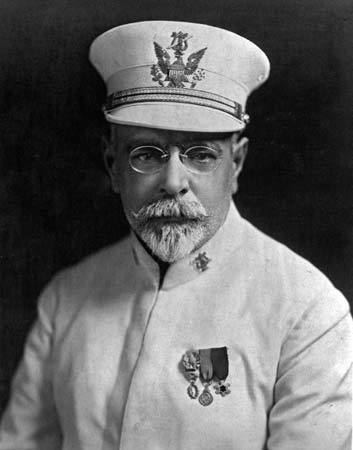
Several years long after serving his apprenticeship, Sousa joined a theatrical (pit) orchestra where he learned to conduct. He returned to the U.S. Marine Band as its head in 1880 and remained as its conductor until 1892. Sousa led "The President's Own" band under five presidents from Rutherford B. Hayes to Benjamin Harrison. Sousa's band played at two Inaugural Balls, those of James A. Garfield in 1881, and Benjamin Harrison in 1889. The marching brass bass, or sousaphone, a modified helicon, was created by J. W. Pepper – a Philadelphia instrument maker who created the instrument in 1893 at Sousa's request using several of his suggestions in its design. He wanted a tuba that could sound upward and over the band whether its player was seated or marching. The sousaphone was re-created in 1898 by C.G. Conn and this was the model that Sousa preferred to use.
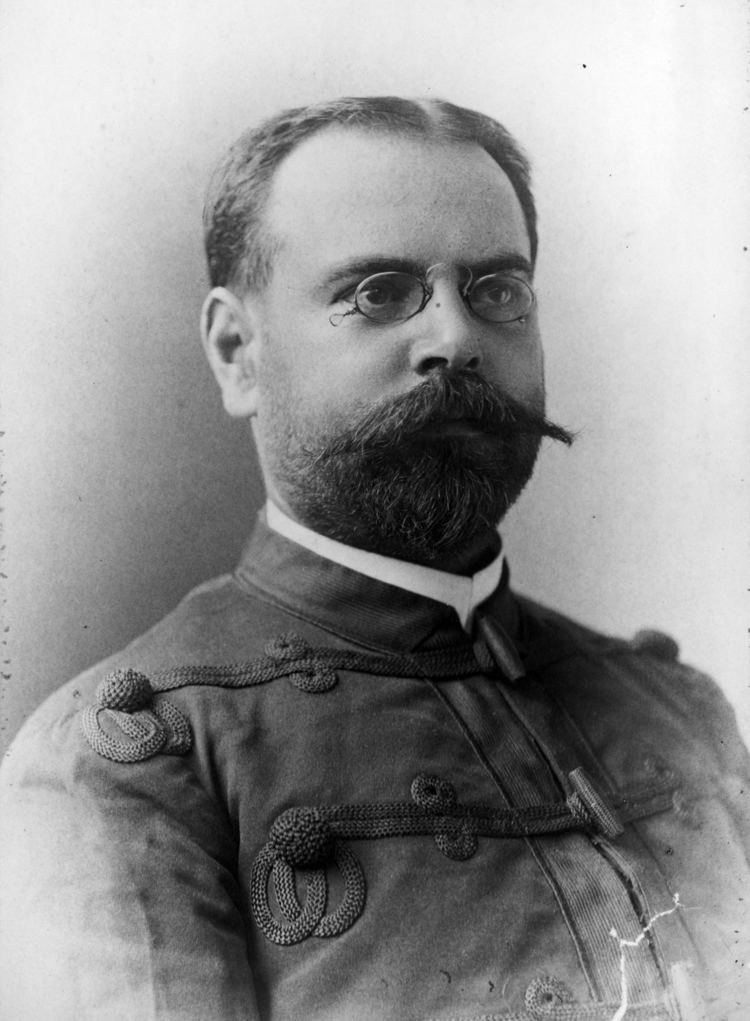
He organized The Sousa Band the year he left the Marine Band. The Sousa Band toured from 1892 to 1931, performing at 15,623 concerts both in America and around the world, including at the World Exposition in Paris, France and at the Royal Albert Hall in London. In Paris, the Sousa Band marched through the streets to the Arc de Triomphe – one of only eight parades the band marched in over its forty years.
Personal life
On December 30, 1879, Sousa married Jane van Middlesworth Bellis (1862–1944). They had three children: John Philip, Jr. (April 1, 1881 – May 18, 1937), Jane Priscilla (August 7, 1882 – October 28, 1958), and Helen (January 21, 1887 – October 14, 1975). All were buried in the John Philip Sousa plot in the Congressional Cemetery. Wife Jane, daughters Jane Priscilla and Helen Abert joined the Daughters of the American Revolution (DAR) in 1907. Their ancestor was Adam Bellis, who served under several different commands for the New Jersey troops in the American Revolutionary War.
Late in his life, Sousa lived in Sands Point, New York. Sousa died of heart failure at the age of 77 on March 6, 1932, in his room at the Abraham Lincoln Hotel in Reading, Pennsylvania. He had conducted a rehearsal of "The Stars and Stripes Forever" the previous day with the Ringgold Band. He is buried in Washington, D.C.'s Congressional Cemetery. A school (John Philip Sousa Elementary) and a band shell were named after him and there was a memorial tree planted in nearby Port Washington, New York. Wild Bank, his seaside house on Hicks Lane, has been designated a National Historic Landmark, although it remains a private home and is not open to the public. He was posthumously enshrined in the Hall of Fame for Great Americans in 1976, one of just 102 Americans ever to be honored in such a manner.
Military service
Sousa served two periods of service in the United States Marine Corps. He first enlisted on June 9, 1868 at the age of 13 as an apprentice musician. In official records, his initial rank was listed as "boy". He re-enlisted on July 8, 1872 and was promoted to musician. He left the Marine Corps in 1875 at the age of 20.
His second period of Marine service was from 1880 to 1892. During this period he was the leader of the Marine Band in Washington, D.C. (Some sources state that Sousa served with the rank of Sergeant Major and was eventually promoted to Warrant Officer but this is erroneous as the leader of the band was a separate rank from sergeant major and the Marine Corps did not have warrant officers until 1916.) Sousa's salary as "leader of the band" (his official Marine Corps rank) was $83 per month which compared to a second lieutenant at $115.67 per month and a sergeant major with 20 years of service at $30 per month.
Under his leadership, the Marine Band became the premier military band in the United States. The Columbia Phonograph Company produced 60 cylinders of recordings of the Marine Band conducted by Sousa. The recordings, along with two tours in 1891 and 1892, led to Sousa becoming nationally famous. During his time with the Marine Band, Sousa composed several of his famous marches including The Washington Post, The Thunderer and Semper Fidelis which remain staples of marching bands to this day.
In July 1892, Sousa requested, and received, a discharge from the Marine Corps to pursue a financially promising civilian career as a band leader. He conducted a farewell concert at the White House on July 30, 1892 and was discharged from the Marine Corps the next day.
On May 31, 1917, shortly after the United States declared war on Germany and entered World War I, Sousa was commissioned as a lieutenant in the United States Naval Reserve. At that time, Sousa was 62 years old which was then the mandatory retirement age for Navy officers. During the war, Sousa led the Navy Band at the Great Lakes Naval Station near Chicago, Illinois. Being independently wealthy at this point in his life, he donated most of his naval salary, except a token $1 per month, to the Sailors' and Marines' Relief Fund.
Sousa was discharged from active duty after the war's end in November 1918. He returned to conducting his own band but continued to wear his naval uniform for many of his concerts and other public appearances. In the early 1920s, he was promoted to the rank of lieutenant commander in the Naval Reserve but did not return to active duty.
For this service during the war, Sousa received the World War I Victory Medal. By right of his wartime service, he was elected as a Veteran Companion of the Military Order of Foreign Wars.
Honors
Sousa was decorated with the palms of the Order of Public Instruction of Portugal. He also received the Royal Victorian Medal from King Edward VII of the United Kingdom in December 1901 for conducting a private birthday concert for Queen Alexandra.
During World War II, the Liberty ship SS John Philip Sousa was named after him. The ship's bell is still used by the Marine Band in concert.
Sousa has a star in his honor at 1500 Vine Street on the Hollywood Walk of Fame.
In 1976, Sousa was inducted into the Hall of Fame for Great Americans. In 1998, he was inducted into the American Classical Music Hall of Fame in Cincinnati, Ohio.
The band hall of the Marine Band was dedicated as "John Philip Sousa Band Hall."
In 1987, an act of Congress named "The Stars and Stripes Forever" as the National March of the United States.
Music
Sousa wrote 137 marches, 15 operettas, 5 overtures, 11 suites, 24 dances, 28 fantasies, and 322 arrangements of nineteenth-century western European symphonic works.
Marches
Sousa wrote 137 marches, published by Harry Coleman of Philadelphia, Carl Fischer Music, the John Church Company, and the Sam Fox Publishing Company, the last association beginning in 1917 and continuing until his death. Some of his notable ones are:
Sousa wrote marches for several American universities, including the University of Minnesota, University of Illinois, University of Nebraska, Kansas State University, and Marquette University.
Operettas
Sousa wrote many notable operettas including:
Marches and waltzes have been derived from many of these stage-works. Sousa also composed the music for six operettas that were either unfinished or not produced: The Devils' Deputy, Florine, The Irish Dragoon, Katherine, The Victory, and The Wolf.
In addition, Sousa wrote a march based on themes from Gilbert and Sullivan's comic opera The Mikado, the elegant overture Our Flirtations, a number of musical suites, etc. He frequently added Sullivan opera overtures or other Sullivan pieces to his concerts. He was quoted saying, "My religion lies in my composition".
Writings, views and interests
Sousa had several additional interests outside of music. He wrote three novels – The Fifth String, Pipetown Sandy, and The Transit of Venus – as well as a full-length autobiography, Marching Along and numerous articles and letters-to-the-editor on a variety of subjects. He participated in trapshooting, taking an active role on the national stage in competitions.
Trapshooting
As a trapshooter, he ranked as one of the all-time greats, and was enshrined in the Trapshooting Hall of Fame. He organized the first national trapshooting organization, a forerunner to today's Amateur Trapshooting Association (ATA). Sousa remained active in the fledgling ATA for some time after its formation. Some credit Sousa as the father of organized trapshooting in United States. He also wrote numerous articles about trapshooting. Sousa was a regular competitor representing the United States Navy in trapshooting competitions, particularly against the United States Army. Available records indicate that Sousa registered more than 35,000 targets during his shooting career. A quote from his Trapshooting Hall of Fame biography says it best: "Let me say that just about the sweetest music to me is when I call, 'pull,' the old gun barks, and the referee in perfect key announces, 'dead'."
Writing
In his 1902 novel The Fifth String, a young violinist made a deal with the Devil for a magic violin with five strings. The first four strings of the violin excited the emotions of Pity, Hope, Love and Joy. The fifth string would cause the player's own death once played. When the violinist was unable to win the love of the woman he desired, he played upon the death string at what would be his final live concert.
In 1905, Sousa published a book entitled Pipetown Sandy, which included a satirical poem titled "The Feast of the Monkeys". The poem described "a lavish party attended by variety of animals, however, overshadowed by the King of Beasts, the lion...who allows the muttering guests the privilege of watching him eat the entire feast". At the end of his gluttony, the lion explained, "Come all rejoice, You've seen your monarch dine."
In 1920, he wrote a 40,000-word story entitled "The Transit of Venus". The story recounts a group of misogynists called the Alimony Club who, as a way of temporarily escaping the society of women, embark on a sea voyage to observe the transit of Venus. The captain's niece, however, had stowed away on board and soon won over the men.
Sousa also wrote a booklet entitled "A manual for trumpet and drum", published by the Ludwig drum company, with advice for playing drums and trumpet. An early version of the trumpet solo to "Semper Fidelis" was included in this volume.
Hostility to recording
Sousa held a very low opinion of the emerging and upstart recording industry. Using an epithet coined by Mark Twain, he derided recordings as "canned music", a reference to the early wax cylinder records that came in can-like cylindrical cardboard boxes. In a submission to a congressional hearing in 1906, he argued:
These talking machines are going to ruin the artistic development of music in this country. When I was a boy...in front of every house in the summer evenings, you would find young people together singing the songs of the day or old songs. Today you hear these infernal machines going night and day. We will not have a vocal cord left. The vocal cord will be eliminated by a process of evolution, as was the tail of man when he came from the ape.
Law professor Lawrence Lessig cited this passage to argue that in creating a system of copyrights in which control of music is in the hands of record labels, Sousa was essentially correct.
Sousa's antipathy to recording was such that he almost never conducted his band when it was being recorded. Nevertheless, Sousa's band made numerous recordings, the earliest being issued on cylinders by several companies, followed by many recordings on discs by the Berliner Gramophone Company and its successor, the Victor Talking Machine Company (later RCA Victor). The Berliner recordings were conducted by Henry Higgins (one of Sousa's cornet soloists) and Arthur Pryor (Sousa's trombone soloist and assistant conductor), with Sousa quoted as saying, "I have never been in the gramophone company's office in my life." A handful of the Victor recordings were actually conducted by Sousa, but most were conducted by Pryor, Herbert L. Clarke, Edwin H. Clarke, or by four of Victor's most prolific house musicians: Walter B. Rogers (who had also been a cornet soloist with Sousa), Rosario Bourdon, Josef Pasternack, and Nathaniel Shilkret. Details of the Victor recordings are available in the external link below to the EDVR.
Other interests
Sousa also appeared with his band in newsreels and on radio broadcasts (beginning with a 1929 nationwide broadcast on NBC). In 1999, Legacy Records released some of Sousa's historic recordings on CD. In 1922, he accepted the invitation of the national chapter to become an honorary member of Kappa Kappa Psi, the national honorary band fraternity. In 1925, he was initiated as an honorary member of Phi Mu Alpha Sinfonia, the national fraternity for men in music, by the fraternity's Alpha Xi chapter at the University of Illinois. In 1952, 20th Century Fox honored Sousa in their Technicolor feature film Stars and Stripes Forever with Clifton Webb portraying the composer. Fox music director Alfred Newman arranged the music and conducted the studio orchestra for the soundtrack. It was loosely based on Sousa's memoirs, Marching Along.
John Philip Sousa Award
Even after death, Sousa continues to be remembered as "The March King" through The John Philip Sousa Foundation. The non-profit organization founded in 1981, recognizes one superior student in marching band for "musicianship, dependability, loyalty, and cooperation." The John Philip Sousa Foundation provides awards, scholarships, and projects such as The Sudler Trophy, The Sudler Shield, The Sudler Silver Scroll, The Sudler Flag of Honor, The Historic Roll of Honor, The Sudler Cup, The Hawkins Scholarship, National Young Artists, The National Community Band, and The Junior Honor Band Project.
